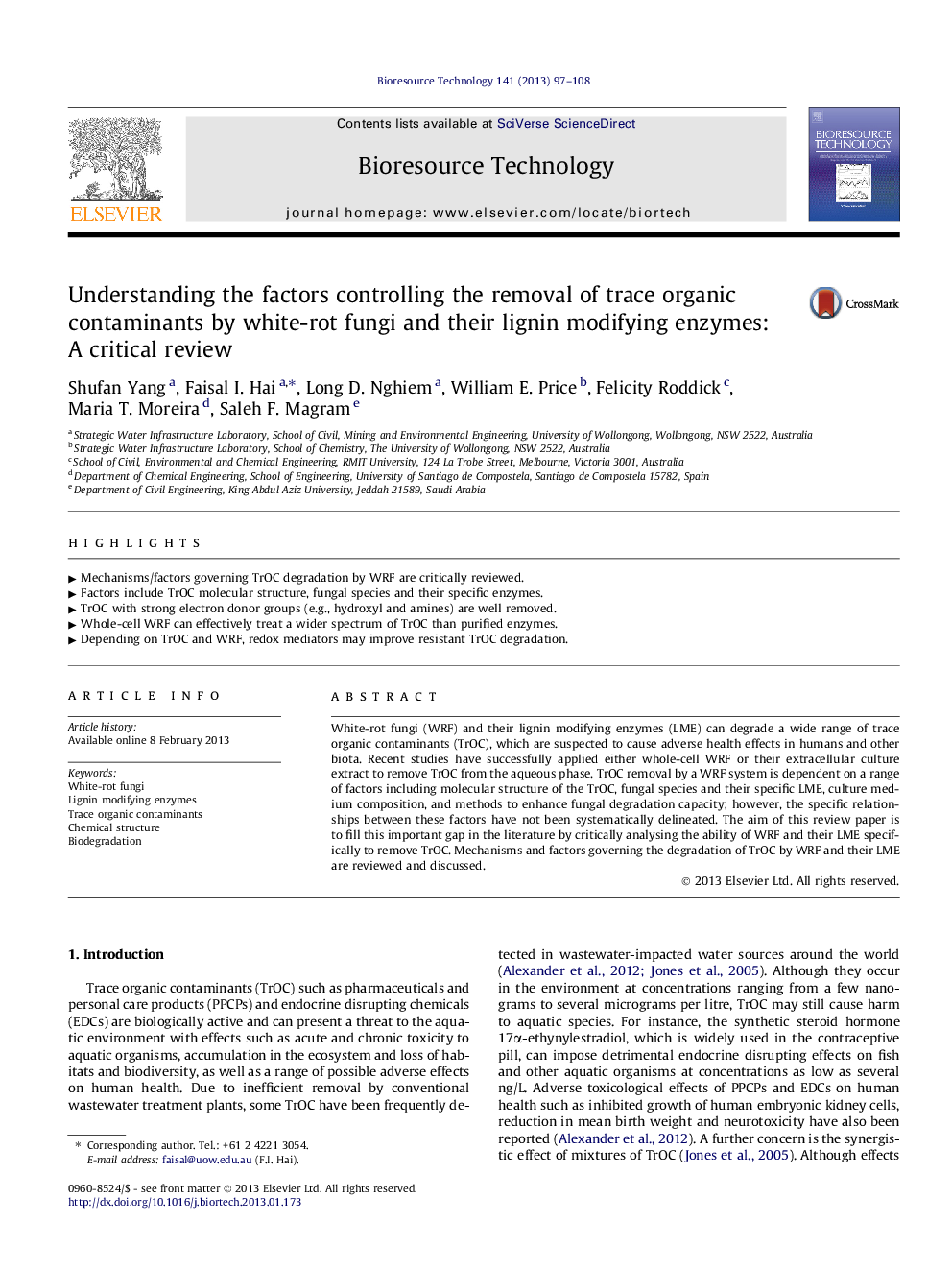| کد مقاله | کد نشریه | سال انتشار | مقاله انگلیسی | نسخه تمام متن |
|---|---|---|---|---|
| 681093 | 1460002 | 2013 | 12 صفحه PDF | دانلود رایگان |

White-rot fungi (WRF) and their lignin modifying enzymes (LME) can degrade a wide range of trace organic contaminants (TrOC), which are suspected to cause adverse health effects in humans and other biota. Recent studies have successfully applied either whole-cell WRF or their extracellular culture extract to remove TrOC from the aqueous phase. TrOC removal by a WRF system is dependent on a range of factors including molecular structure of the TrOC, fungal species and their specific LME, culture medium composition, and methods to enhance fungal degradation capacity; however, the specific relationships between these factors have not been systematically delineated. The aim of this review paper is to fill this important gap in the literature by critically analysing the ability of WRF and their LME specifically to remove TrOC. Mechanisms and factors governing the degradation of TrOC by WRF and their LME are reviewed and discussed.
► Mechanisms/factors governing TrOC degradation by WRF are critically reviewed.
► Factors include TrOC molecular structure, fungal species and their specific enzymes.
► TrOC with strong electron donor groups (e.g., hydroxyl and amines) are well removed.
► Whole-cell WRF can effectively treat a wider spectrum of TrOC than purified enzymes.
► Depending on TrOC and WRF, redox mediators may improve resistant TrOC degradation.
Journal: Bioresource Technology - Volume 141, August 2013, Pages 97–108